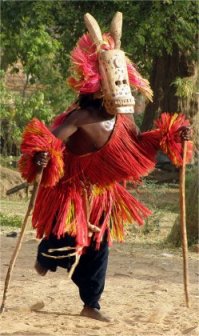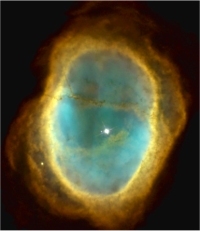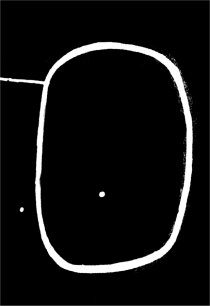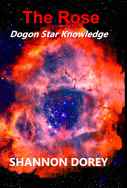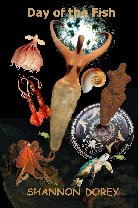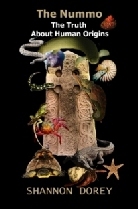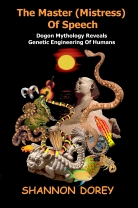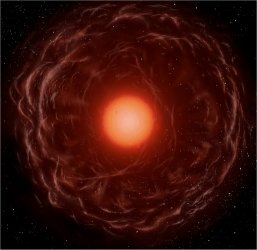 Figure 1-1. Red Giant Expelling MatterEuropean Space Agency.; Photo: ESA Credit JAXA. http://www.esa.int/esa-mmg/mmg.pl?b=b&topic=Astronomy% 20targets&subtopic=Dust%2C%20interstellar &single=y&start=21&size=b? |
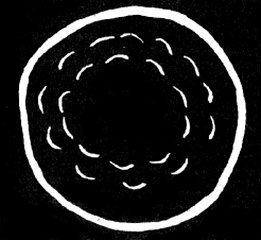 Figure 1-2. Red Giant Female Po PiluGermaine Dieterlen and Marcel Griaule, The Pale Fox. Translation to English by Stephen C. Infantino, Ph.D. (Paris, France 1965) Originally Published in French as Le renard pale by L'Institute d'Ethnologie. (Chino Valley, Arizona. Continuum Foundation. 1986.) p. 226 |
After twety-three years of research and four books I can say with confidence that the Dogon didn't just have basic knowledge of astronomy, they had advanced knowledge. This knowledge extended into astrophysics, which was an intricate part of their entire religious system. In order to understand Dogon cosmology, it is necessary to understand some basic knowledge about suns because suns are at the very heart of everything. Most of us don't know a lot about astronomy or astrophysics so I will try to give you a very basic crash course on suns. You've probably heard of red giants, white dwarfs, black holes and neutron stars, well they are basically just different stages in the lives of suns. The Dogon considered compact stars like white dwarfs, neutron stars and black holes, male symbols and associated with death. A main sequence star, like our Sun, was a female symbol. Red giant stars were pregnant suns and were likewise female. It was because of these associations that the Dogon believed that suns were hermaphrodites.
It might be better to understand the Dogon's androgynous perception of a sun if we use our Sun as an example. Our Sun was born about 4.6 billion years ago and has enough nuclear fuel to stay as it is now for around another 5 billion years.http://www.space.com/58-the-sun-formation-facts-and-characteristics.html Because our Sun is in its main sequence phase, the Dogon identified it as a female star. When our Sun is around 9.6 billion years old, it will become a red giant star and begin to expand dramatically. In Dogon cosmology, this stage of our Sun will be its pregnant phase. In its red giant or pregnant phase, our Sun's radius will expand to a size that in our Solar System might be comparable to the orbit of the Earth. Scientists aren't certain yet if the Earth will be engulfed by our Sun at that time but what they do speculate is that Mercury and Venus will be swallowed by the Sun and all life will be destroyed on Earth.http://www.space.com/22471-red-giant-stars.html After the planets, moons and other matter have been swallowed, they will then be regurgitated in the form of gas and dust that will be blown away as our red giant Sun expands into space.
Because our Sun is considered small, it will not explode as a supernova. Instead a planetary nebula will eventually form from all of the gas and dust blown away. Planetary nebulae are believed to play a crucial role in the chemical evolution of the Milky Way galaxy and usually "contain larger portions of elements such as carbon, nitrogen and oxygen that are recycled into the interstellar medium".https://en.wikipedia.org/wiki/Planetary_nebula When large red giant stars explode as supernovas they create nebulae, which are considered stellar nurseries, where new planets and stars are created from dying suns.http://en.wikipedia.org/wiki/Nebula This is why the Dogon perceived red giant stars to be pregnant suns and why they were symbols of both death and regeneration. Once the gas and dust will be blown away from our Sun, it will become a dead white dwarf star, which the Dogon considered a male star. It is because of these transformations that the Dogon identified suns as hermaphrodites.
Figure 1-1 is an artist's impression of a red giant ejecting matter created by the Japan Aerospace Exploration Agency (JAXA). Figure 1-1 is the image that inspired the direction of my research and the title of The Rose for this book. The rose is a sacred symbol, which can be found throughout world history and religion, and which my research suggests is based on knowledge about red giant stars expelling matter. A picture of the red giant star known to the Dogon as the Female Po Pilu is shown as Figure 1-2.Germaine Dieterlen and Marcel Griaule, The Pale Fox. Translation to English by Stephen C. Infantino, Ph.D. (Paris, France 1965) Originally Published in French as Le renard pale by L'Institute d'Ethnologie. (Chino Valley, Arizona. Continuum Foundation. 1986.) p. 226 According to the Dogon, this star seeded the Milky Way Galaxy. The twenty-two lines on the drawing represented the twenty-two constellations created by the star. Griaule and Dieterlen p. 499 Because of the descriptions given by the Dogon, I believe that this drawing depicts a nebula forming around the red giant star as it was beginning to expel its matter.In the Dogon religion, this was known as tonu.
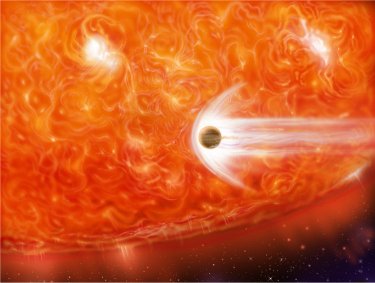 Figure 1-3. Red Giant Swallows Planethttp://hubblesite.org/newscenter/archive/releases /1999/24/image/a/ Artist James Gitlin |
Figure 1-3, which is found on the Hubble site, is the artist James Gitlin's depiction of a red giant gobbling up a large planet.http://hubblesite.org/newscenter/archive/releases/1999/24/
image/a/ Artist James Gitlin It was first published on August 12, 1999 and the article that accompanied it opened with the line, "'big fish eat little fish' may hold true when it comes to planets and stars." It continues to say,
Perhaps as many as 100 million of the Sun-like stars in our galaxy harbor close-orbiting gas giant planets like Jupiter, or stillborn stars known as brown dwarfs, which are doomed to be gobbled up by their parent stars. Astronomers (Space Telescope Science Institute astronomer Mario Livio and postdoctoral fellow Lionel Siess ) did not directly observe the planets, because their parent stars had already swallowed them. But the researchers did find significant telltale evidence that some giant stars once possessed giant planets that were then swallowed up. The devouring stars release excessive amounts of infrared light, spin rapidly, and are polluted with the element lithium. The illustration depicts the cosmic cannibalism.http://hubblesite.org/newscenter/archive/releases/1999/24/
On Oct. 25, 2012, an international team of astronomers caught a red giant star in the act of devouring one of its planets. They observed the red giant BD+48 740 using the 9.2-meter Hobby-Eberly Telescope at the McDonald Observatory in Texas. The star appeared to have the fumes of the scorched planet in its atmosphere.http://science.nasa.gov/science-news/science-at-nasa/2012/25oct_friedplanets/ "The team uncovered the signature of the planet that had been 'eaten' by looking at the chemistry of the host star."http://www.bbc.co.uk/news/science-environment-19332091
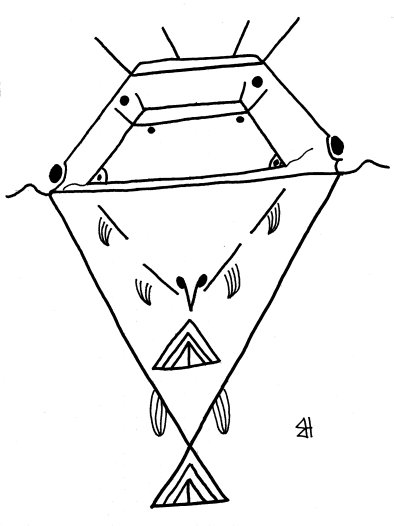 Figure 1-4. Red Giant with Lébé InsideReplication of Dogon drawing by Robert Hill (original Griaule and Dieterlen p. 328) |
The Dogon drawing of a catfish with another catfish shown inside it, Figure 1-4, reminds us of the opening statement in the article on red giant stars, about how big fish eat little fish. This isn't a coincidence. This is precisely what this drawing represented to the Dogon. The Dogon reported that after the Red Giant star the Po Pilu died, the blood from her body created the stars as we see them today.
 Figure 1-5. Route of the BloodFrom Griaule and Dieterlen p. 314 |
Figure 1-5 is the Dogon drawing of the "route of the blood" of the sacrificed Nummo becoming stars. This figure was drawn with porridge during the sowing celebrations in the totemic sanctuary, which represented both the formation of the stars in the Milky Way galaxy and the blood flow of the sacrificed Nummo (Po Pilu) into space.Griaule and Dieterlen p. 314
Later when another red giant star known as the Nummo Titiyayne expanded into space, it swallowed our Sun and what was left of the Red Giant the Female Po Pilu. Figure 1-4 shows that ultimately our Sun was regenerated by the Nummo Titiyayne, when the Nummo Titiyayne swallowed the Sun and then regurgitated it. Once theNummo Titiyayne expelled all of its gas and dust and created a nebula or stellar nursery, one of the new stars born from that nebula was known to the Dogon as Emme ya. Over time Emme yaeventually became a red giant star as well. The Red Giant star Emme ya was considered a resurrection of the previous red giants. The Dogon believed that the seeds or creative matter of any former star were found in the clavicles of the new sun being born. The Dogon words yapunu da meant consumed millet (hence " dead " yu yimu) but then present in the clavicles of the people it had nourished.
When reading about Dogon cosmology, it is important to understand that the key celestial bodies referred to in the religion, symbolized or represented specific people or biological entities that once lived among the Dogon people. For instance, the Red Giant the Female Po Pilu, which was the first Sun created in our Solar System and in the Universe, symbolized the hermaphroditic Nummo, who were immortal beings and considered the mothers of humanity. The Red Giant Female Po Pilu was not only considered a hermaphrodite but the star was dual just like the Nummo. In other words, it had a companion star or Sun. The Nummo evolved as a result of the genetic matter that formed from the gas and dust ejected from the star. The immortal Nummo were supposed to be far superior to humans in every way.
According to the Dogon elder Ogotemmêli's description of them, the Nummo, whom he also referred to as the "Serpent", were amphibians that were often compared to lizards, chameleons, and occasionally even sloths (because of them being slow moving and having shapeless necks). They were described as fish capable of walking on land; while they were on land, the Nummo stood upright on their tails. The Nummo had whiskers and their skin was primarily green, but, like the chameleon, it sometimes changed colours. It was said at times to have all the colours of the rainbow.Marcel Griaule, Conversations with Ogotemmêli. An Introduction to Dogon Religious Ideas. (London, England. Oxford University Press for the International African Institute. 1965. Originally published as Dieu d'Eau: entretiens avec Ogotemmêli 1948.) p.188 The fish that was most often used to describe the Nummo was the catfish. The Nummo were also shape shifters, which may be why they were identified with chameleons. In The Nummo, I associate them with cephalopods, which are the shape shifters of the sea, and will be referred to later. The red giant Female Po Pilu was not only considered a hermaphrodite but the star was dual just like the Nummo. In other words, it had a companion star or Sun.
The Red Giant stars the Nummo Titiyayne and Emme ya were associated with the Mistress of Speech, who was known as the Seventh Ancestor and was believed to have the perfect combination of human and Nummo DNA. The Dogon elder Ogotemmêli told Griaule that the Mistress of Speech regenerated Lébé by first swallowing her/him and then regurgitating her/him.Griaule p. 58 Although they were referring to the genetic changes that happened to Lébé, this mimicked what went on cosmically with our Sun, and the Red Giant star the Nummo Titiyayne. In most descriptions of the Mistress of Speech, she had a human upper body and a fish tailed lower body but in some depictions, she was drawn as a catfish as in Figure 1-4. She was also described as a serpent in many passages.
In Dogon mythology, Lébé was born as a hermaphrodite or "twin" with a human upper body and fish tailed lower body. Five generations after Lébé's birth, humans were born as single sexed beings. On the cosmic level, this meant that we originally had two Suns but lost one. It also suggests that what happened on the cosmic level, affected our DNA. According to NASA, our Sun is unusual in that it is alone as most stars do occur in multiple or binary systems. The Dogon attributed the loss of our second Sun to the failed experiment described in the Introduction, and which will be referred to in more detail later. Lébé's four detached fins, shown inside the star (Mistress of Speech) in Figure 1-4, revealed that the Nummos' fish fins were going to be replaced by human arms and legs.
The Red Giant stars the Female Po Pilu, Nummo Titiyayne and Emme ya were celebrated during the Dogon Sigui festival, which was held only once every sixty years. Throughout the 60-year period prior to the Sigui festival, a sign would be drawn daily on the inside of the façade of the principal totemic sanctuaries eventually making sixty signs because sixty was considered the "number of the placenta" me lugu. The final painting of the red giant drawn for the Sigui festival is shown as Figure 1-6. This drawing was so important to the Dogon that individuals, who started the drawing, knew they would never likely live long enough to see it completed for the Sigui. In their totality, the signs were called "drawings of the years that come" or "drawings of all of the sixty years." Griaule and Dieterlen. p. 105
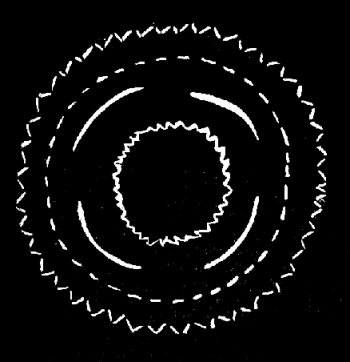 Figure 1-6. Red Giant for the Sigui From Griaule and Dieterlen p. 314 |
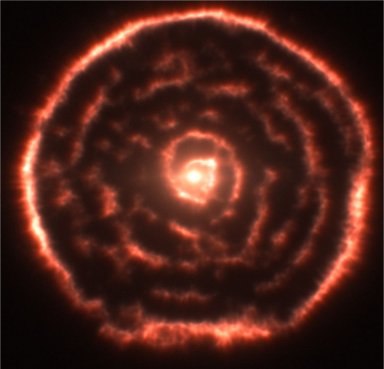 Figure 1-7. Red Giant R Sculptoris https://en.wikipedia.org/wiki/R_Sculptoris#/media/ File:Curious_spiral_spotted_by_ALMA_around_ red_giant_star_R_Sculptoris_(data_visualisation).jpg |
Compare Figure 1-6 drawn by the Dogon with Figure 1-7, an actual photo of the star R Sculptoris, a red giant star located about 1,500 light years away toward the Constellation of the Sculptor (Sculptoris). A light year is the distance light travels in one Earth year, which is almost 6 trillion miles.spaceplace.nasa.gov/review/starfinder/ This slice through the new ALMA data reveals the shell around the star, which shows up as the outer circular ring. A very clear spiral structure is shown in the inner material, which they believed could be caused by an inner hidden companion star.https://en.wikipedia.org/wiki/R_Sculptoris#/media/
File:Curious_spiral_spotted_by_ALMA_around_
red_giant_star_R_Sculptoris_(data_visualisation).jpg Figure 1-7 was produced by the ALMA Observatory (ESO/NAOJ/NRAO) in October 2012, and is the first time this unique spiral structure was observed by ALMA (Atacama Large Millimeter/submillimeter Array).http://apod.nasa.gov/apod/ap121016.html
…The star was observed with the new Atacama Large Millimeter/submillimeter Array (ALMA) the most powerful telescopic array observing near millimeter wavelengths, that part of the spectrum situated well beyond red light but before microwaves and radio waves. Data from ALMA observations was used to create a 3D visualization of the gas and dust immediately surrounding the star. A digital slice through this data showed the unexpected spiral structure. http://apod.nasa.gov/apod/ap121016.html
Although this image was unusual, astronomers had spotted a similar spiral pattern in visible light in the star system LL Pegasi in 2010, where a planetary nebula was forming.http://apod.nasa.gov/apod/ap121016.html How did the Dogon know what the gas and dust surrounding a red giant star looked like? Astronomers have just seen pictures of these stars over the past few years. The only conclusion we can make is that the Dogon's claim of having received their stellar knowledge from the Nummo was truthful. The similarity between what the Dogon drew of the gas and dust surrounding the star Figure 1-6, and the photo taken in 2012, Figure 1-7, might be insignificant on its own but the information that astronomers know about red giants is exactly what the Dogon described. To the Dogon, these signs were used to first create and then regenerate the Universe.Griaule and Dieterlen. p. 106
During the Sigui festival, the red giant star Po Pilu was depicted using a red calabash, a kind of gourd, which was cut into a type of bowl, which held the seeds used for sowing the fields. Figure 1-6 was known as "calabash in a ball," gaba gunnu. It was the model for other red giant stars, which would later form throughout the Universe. According to the Dogon, it prefigured the womb (matrix) of the world.Griaule and Dieterlen. p. 153 This is why the red calabash or gourd played such an important role in the Dogon religion. The importance of the calabash is apparent in other cultures around the world and I believe it meant the same thing to those people as it did to the Dogon. The gourd was one of the first cultivated plants in the world but it wasn't grown primarily for food but was used as a water container. Researchers speculate that the bottle gourd may have been carried from Africa to Asia, Europe and the Americas in the course of human migration.http://en.wikipedia.org/wiki/Calabash This association is very significant because the Dogon identified water with life and immortality, which symbolized the Nummo and the Mistress of Speech. The gourd's water was associated with the water of life found in the amniotic sac during pregnancy. The calabash filled with water and seeds symbolized the red giant stars the Female Po Pilu, the Nummo Titiyayne and Emme ya creating and regenerating the Universe.
Swallowing and sacrificial myths are about regeneration and my research indicates that many ancient cultures once celebrated these red giant stars. Swallowing and sacrificial myths have evolved into common themes in world religions and were referred tp in detail in my three earlier books, The Master (Mistress) of Speech, The Nummo and Day of the Fish. Joseph Campbell described the Biblical account of Jonah being swallowed by a great fish (popularly called a whale). This is illustrated on a 3rd century lamp. Campbell refers to the significance of the fish in world mythology.
A Christian lamp of about the third century is decorated with the Jonah legend, which is symbolic of the coming of the human out of the fish condition. So you can take a legend and read into it a mystic reading which may or may not have been there in the first place. The Jonah story is that he was a missionary, who was told by God to preach in Nineveh, but he fled on a ship and was a source of trouble to everyone. Evidently off center and a negative presence, he was thrown overboard and consumed by a fish, but later he came out of the fish. This motif is known as the 'night sea journey.' It's an old, old story. Hiawatha was consumed by a fish, the raven hero of the Northwest Coast Indians was consumed by a fish, and so forth. This is the going down into the abyss and coming out again…. Joseph Campbell Transformation of Myth Through Time New York, New York Harpers and Row Publishers 1990. pp. 196-200
I believe the same "old old story" originated with the Nummo and its significance survives in the Dogon religion in association with the red giant stars Emme ya, the Nummo Titiyayne and the Female Po Pilu. The regurgitation of Lébé by the Mistress of Speech, who was symbolized by the red giant star Emme ya and the Nummo Titiyayne, signifies regeneration.Griaule, Conversations with Ogotemmêli p. 49-50 This is exactly what occurs with the story of Jonah and the big fish, or whale. In the Dogon religion, the androgynous Mistress of Speech, who was half fish and half human, was regarded as a saviour, who was sacrificed for the betterment of humanity. Griaule, Conversations with Ogotemmêli p. 58 The fish has long been a popular Christian symbol, which suggests that the Mistress of Speech, a hermaphroditic figure, who according to my research predates Christianity, influenced the later Christian myth. Even though the Dogon religion was written down in 1946, it is an oral religion that was ancient.
To describe the stars created from the death of the red giant Po Pilu, the Dogon said the constellations were the Nummo's "ornaments" which were placed on the twenty-two points of her body. These represented the twenty-two different constellations.Griaule and Dieterlen. p. 499 These "ornaments" were the stars, which until then were grouped "at the center of the sky and to the east" which were then freed and "scattered" through space as we see them today. This is also the point in time when they began to move in their respective orbits.Griaule and Dieterlen. p.498
I believe that it is because of these associations that the zodiac was so important to early and medieval Christianity. As late as 1557, Nicolas Harpsfield, the Archdeacon of Canterbury, was horrified to discover the religious services in the Chapel of Egerton were being performed before the image of a naked man surrounded by the twelve signs of the zodiac. He didn't punish the clergy, but he ordered a sculpture of the crucifixion to be provided immediately.Sophie Page, Astrology in Medieval Manuscripts (The British Library, London 2002) p. 57.
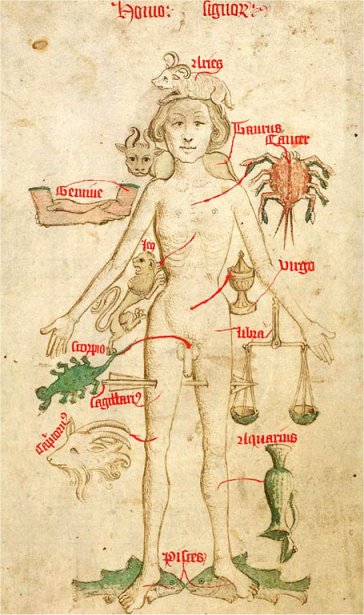 Figure 1-8. Zodiacal Man (1486) Dorey, The Nummo, Elemental Expressions Ltd. 2013 p. 231 |
In mediaeval times, the naked male, known as the Zodiacal Man, Figure 1-8, was often seen to be Christ. Each of the twelve signs of the zodiac was linked with a particular part of the human body and sometimes with an inner organ or function. Gettings p. 22 These associated body parts relate to the Dogon's understanding that the Nummo's body parts, in the form of the red giant Po Pilu, which created the stars in the galaxy. The Dogon identified different stars with particular body parts. For instance, Orion's Belt was the liver. The Pleiades were identified with the kidneys and Orion's Sword, with the spleen. The skull was Jupiter. The red giant Emme ya was identified with the heart.Griaule and Dieterlen. p. 348 In the Dogon religion, the number 12 was associated with males (Fox, Jackal or Ogo) and mortality, and the number 10 with females (Nummo) and immortality. The two numbers add up to 22, the number of the constellations created by the Female Po Pilu. The zodiac is composed of the 12 constellations that lie along the yearly path of the sun across the sky, associating the path with the human world and mortality.
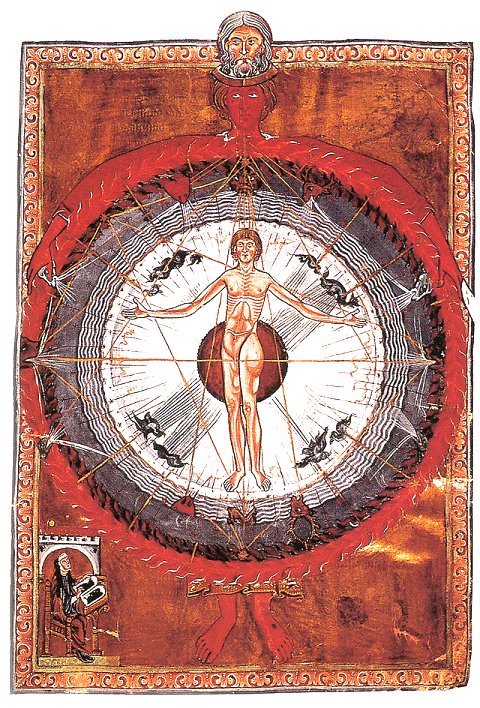 Figure 1-9. Universal Man Dorey, The Rose p. 13 |
Another Christian association with the red giant stars, the Female Po Pilu, the Nummo Titiyayne and Emme ya, is found in this early 13th century copy of the illumination "Universal Man" from Hildegard's Liber Divinorum Operum, I.2. Lucca, MS 1942, Figure 1-9. Saint Hildegard of Bingen, (1098-1179) has been "recognized as a saint by branches of the Roman Catholic Church for centuries. On 7 October 2012, Pope Benedict XVI named her a Doctor of the Church." http://en.wikipedia.org/wiki/Hildegard_of_Bingen Hildegard was a "German writer, composer, philosopher, Christian mystic, Benedictine abbess, visionary, and polymath" who was elected magistra by her fellow nuns in 1136. She founded the monasteries of Rupertsberg in 1150 and Eibingen in 1165. http://en.wikipedia.org/wiki/Hildegard_of_Bingen Notice the shape of the illumination, which is in the form of a red giant star. There are three male heads, which signify that each sun is responsible for the creation of the next sun. My research suggests that this is modeled on the Dogon concept of Lébé and the Female Po Pilu found inside the Red Giant star the Nummo Titiyayne, and then the remains of the Nummo Titiyayne eventually found inside the Red Giant Emme ya. In other words, each man is found in the preceding man. The red giant star Emme ya symbolized the Mistress of Speech, who was depicted as a catfish. The key figures of the Dogon religion appear on this illustration of the Universal Man just inside the red sun above the head and below the feet of the man in the middle. On Figure 1-9 bottom, you can see a catfish (left), which was a symbol of the Nummo and the Mistress of Speech, a dog (middle), which represented the Jackal and Ogo, and an antelope or deer (right), another symbol of the Nummo and Eight Nummo Ancestors. A man with a lion or lynx face appears top middle, which would symbolize Lébé in the Dogon religion. To the lion's left is another catfish and to his right a deer or antelope. Another dog appears to the left middle and a few other animals appear on the sides but they are difficult to identify, possible more dogs or goats. The barbs of the catfish are especially evident on the upper left image.
The Nummo were identified with the silurus, a catfish.Griaule and Dieterlen. p. 157 Most of these fish have barbs, which are whiskers on the lower jaw. As shown in some Dogon drawings, the Nummo had these same whiskers. In Master (Mistress) of Speech, I refer to some early Greek Gorgon artifacts associated with the Greek goddess Artemis depicting her with whiskers or barbs like the Nummo.Dorey,The Master (Mistress) of Speech, Elemental Expressions Ltd. 2018 pp.58-59. The word Nun is the fourteenth letter of the Hebrew alphabet, which is Phoenician in origin. The American Heritage Dictionary p. 1208 It comes from nwn, which is the Semitic noun, *nun, meaning fish. I believe there may be some ancient association between this and the English word nun identified with a woman who lives under a religious order like Catholicism. The nun's barb, which is a piece of cloth or scarf for covering a woman's neck and breasts, is worn by certain nuns.Funk and Wagnall's Standard College Dictionary p. 113 It is quite possible that the nun's barb originated as a symbol of the barbs or whiskers of the Nummo. In the Dogon religion, Figure 1-9 would have been a red giant star, a female symbol, and a pregnant sun. Without the Dogon religion, we would have no idea what Saint Hildegard's depiction represents. The use of male figures in this depiction is a result of a reversal of the symbols from the pagan religion. In this passage from The Nummo, I refer to Joseph Campbell who called this reversal solarization in his book, The Masks of God.
As with other pagan figures in later male-dominated societies, female and male figures became reversed. As a result of these changes, the meanings of these symbols became confused over time. For instance, in later Greek mythology, the androgynous sun goddess became the sun god and the moon became identified as feminine. Joseph Campbell referred to the reversal of the earlier symbols by the intrusive patriarchal warrior tribesmen whose traditions have come down to us in the Judeo-Christian Old and New Testaments and in the Greek myths. Campbell called it solarization, where the male became associated with the sun and the female with the moon. Campbell, The Masks of God Occidental Mythology, New York, New York, Penguin Books 1964. p.75 The unfortunate result of the reversal was that the original meaning of the mythology was lost….Dorey, The Nummo, Elemental Expressions Ltd. 2013 p. 4
 Figure 1-10. Egyptian goddess Nut https://en.wikipedia.org/wiki/File: Goddess_nut.jpg |
The Egyptian sky goddess Nut, Figure 1-10, was covered in stars touching the different points of her body. In Figure 1-10, her star covered body spans the sky. Like the sacrificed Nummo, in the form of the red giant the Female Po Pilu, her body became the stars. The goddess Nut was sometimes depicted as a cow, a sun symbol in the Dogon religion and a symbol of the Nummo. In the Dogon language, the Sun's name, nay, had the same root as "mother," na, and "cow,"na .Griaule and Dieterlen. p. 157 Nut was the goddess of the sky and all heavenly bodies. "The Book of Nut is a modern title of what was known in ancient times as The Fundamentals of the Course of the Stars," a collection of ancient Egyptian astronomical texts with some going back to at least 2,000 BCE. http://en.wikipedia.org/wiki/Nut_(goddess)
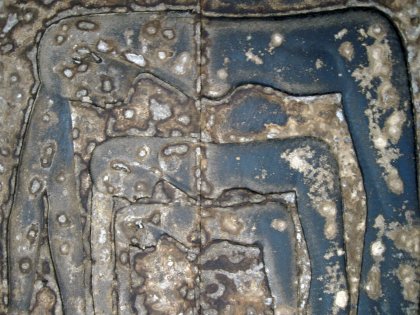 Figure 1-11. Nesting of Goddess Nut in Dendera Relief"Dendera Relief 10" by Olaf Tausch - Own work. Licensed under CC BY 3.0 via WikimediaCommons http://commons. wikimedia.org /wiki/ File: Dendera_Relief_10.JPG #/media/ File:Dendera_Relief_10.JPG |
Figure 1-11 is a triple image of the goddess Nut from the temple at Dendera. The image shows one goddess within another goddess. This represents the same thing as the Dogon drawing Figure 1-4 of Lébé (Sun) inside the Mistress of Speech (Red Giant Nummo Titiyayne), and Hildegard's image Figure 1-9, depicting Christ as a sun inside another Christ depicted as a red giant sun with his head attached to another Christ.
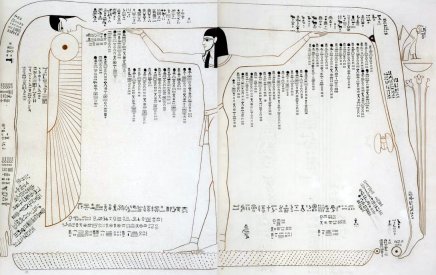 Figure 1-12. Goddess Nut Swallows the SunAstronomical Representation in the tomb of Ramses IV from the Valley of Kings. I monumenti dell'Egitto e della Nubia disegnati dalla spedizione scientifico-letteraria toscana in Egitto 1843 Author: Ippolito Rosellini http://commons.wikimedia.org/wiki/File:Rams%C3%A8sIV-Rosellini-77.jpg Reformatted and changed to black and white. |
Figure 1-12 is a picture of the goddess Nut propped up by the air god Shu, an astronomical representation from the tomb of Ramses IV in the Valley of Kings. The setting Sun is by her mouth about to be swallowed, and Kheperu, the scarab beetle is by her knees as a symbol of the reborn Sun.Lurker, Manfred. Lexikon der Götter und Symbole der
alten Ägypter http://www.reshafim.org.il/ad/
egypt/texts/destruction_of_mankind.htm Khepri was connected with the scarab beetle (kheprer) because the scarab rolls balls of dung across the ground, and the Egyptians saw it as a symbol of the forces that move the Sun across the sky. Khepri also represented creation and rebirth, and he was specifically connected with the rising Sun and the mythical creation of the world. The Egyptians connected his name with the verb kheper, meaning, "develop" or "come into being".http://en.wikipedia.org/wiki/Khepri
Once when Griaule was questioning Ogotemmêli about the Dogon religion, a man by the name of Akundyo, who was the priest of women dying in childbirth and of stillborn children, gave a loud hunter's cry to Ogotemmêli, who returned the call. The hunt tala was an important ritual in the Dogon religion so the mention of the hunter's cry is important. The hunt was associated with the red giant stars Emme ya and the Female Po Pilu beginning their expansions into space. The men of the entire Dogon community performed the hunt before the sowing feast.Griaule and Dieterlen. p. 283 In the Dogon religion, the Mistress of Speech (Seventh Ancestor) played a key role in the hunt. The Dogon believed the animals killed during the hunt were transformed into the nay, which meant the Sun.Griaule and Dieterlen. p. 283 The animals were associated with all of the planets and stars that were swallowed by the red giants. They were not considered dead, however, because they went on to fuel the nebula that would create new planets and stars. Ultimately, the red giant itself was sacrificed for the regeneration of the world. When the priest Akundyo left Ogotemmêli, he said he was going to "look for porcupine", which Griaule pointed out was "an animal much esteemed by these people." Griaule, Conversations with Ogotemmêli p. 21
Although Griaule didn't realize the significance of this interruption, it was an integral part of the religion. I believe that the porcupine, like the hedgehog, was a symbol of the uterus and signified a red or pregnant sun. It was Marija Gimbutas' research on the Goddess of Old Europe that made me realize this connection. In Day of the Fish, I associate the Goddess of Old Europe with the Nummo, who were identified with the sacred feminine, a sun and a cow amongst other things. Marija Gimbutas wrote about the significance of the hedgehog in association with a cow and the uterus. According to Gimbutas, "hedgehog balls with spikes of wood and painted red were called 'uteri' and deposited in graves and churches as late as the beginning of the 20th century in southern Tirol.Gimbutas, The Language of the Goddess, Thames and Hudson, New York, New York. 2001. p. 256 My research suggests that these spiny red balls referred to by Gimbutas were representations of red giant stars. (See Figure 1-13)
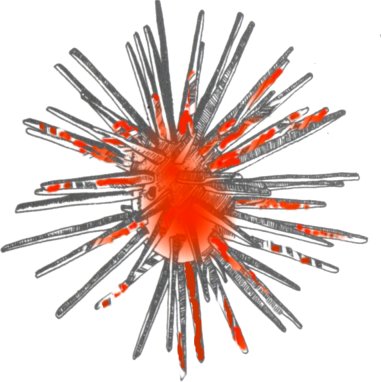 Figure 1-13. Red Hedgehog Balls |
They would have been symbols of death and regeneration just as Gimbutas suggests in this passage.
Spiny balls made of wood and painted red, produced in the southern Tirol in this century and found deposited in graves and churches were called 'uteri' (Kriss 1929; Gulder 1962). The connection with the uterus- and hence with renewal, regeneration, and the Goddess- is reinforced by the German words for a cow's uterus, which after parturition remains swollen and is covered with warts: it is known as Igel, "hedgehog" or Igelkalb, "hedgehog's calf." From the latter expression, we sense the link between the hedgehog and the Goddess. A Maltese proverb says, "We are all children of the hedgehog."(Cassar-Pullicino 1976: 170)
The hedgehog/uterus connection is very old, probably earlier than the beginning of agriculture. Uterus-like signs, some with spikes, some marked with bi-lines are known from several Upper Paleolithic caves, including La Pileta in Spain and Fonte-de-Gaume in France.
…In Minoan and Mycenaean art, stylized hedgehogs appear as terracotta figurines or in vase decoration. A beautiful hedgehog-shaped vase with two heads, decorated with running spirals, has been discovered at Ras Shamra in a cemetery of the 14th century BC. From the 9th to 6th centuries in Greece, Rhodes and Etruria, hedgehog-shaped vases served as pithoi, especially for infant burials. Once again, through the intermediary symbol of the hedgehog, the identity of the womb and regenerating tomb is established.Gimbutas, pp. 256-258
Akundyo, who was the Dogon priest of women dying in childbirth and of stillborn children, would have been associated with infant burials. The porcupine that he went to hunt may have been used in these burial rituals. The two-headed hedgehog vase mentioned by Gimbutas suggests duality and twins. In one Dogon sculpture of the androgynous Nummo, they were depicted joined back to back just like the hedgehog vase. The hedgehog vase was likewise covered in "graceful running spirals"Gimbutas, p. 258 a very important image associated with red giant stars in the Dogon religion.
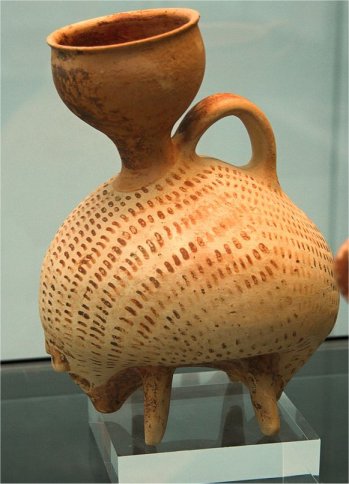 Figure 1-14. Ceramic Hedgehog Rhyton"Rhyton hedgehog Mycenaean, Staatliche Antikensammlungen Munich 120542" by Zde - Own work. Licensed under CC BY-SA 3.0 via Wikimedia Commons - https://commons.wikimedia.org/wiki/File: Rhyton_hedgehog_Mycenaean,_Staatliche_Antikensammlungen_ Munich_120542.jpg#/media/File: |
A ceramic rhyton in the form of a hedgehog from the Mycenaean culture is shown as Figure 1-14 and dated to the Late Bronze Age, 14th to 13th BCE. The upper funnel was used for pouring sacrificial fluid, which then flowed out of the hedgehog's snout. The upper funnel is likely a symbol of the umbilical cord.
Griaule described the Dogon priest Akundyo as wearing a "red Phrygian cap that covered his ears, with a raised point like a uraeus on the bridge of the nose, in the fashion known as 'the wind blows.'" Griaule, Conversations with Ogotemmêli p. 20 The red cap Akundyo wore was a symbol of a red giant (pregnant sun) as it was releasing its gas and dust.
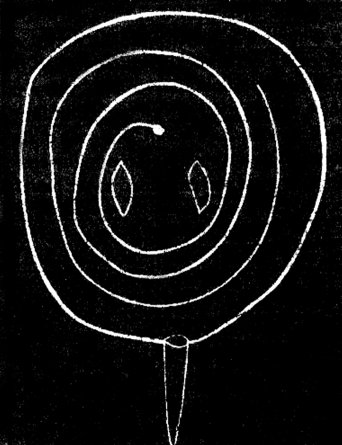 Figure 1-15. Red Giant Female Po Pilu in the SanctuaryReplication of Dogon drawing©Shannon Dorey |
The Dogon drew an image of the red giant the Female Po Pilu, Figure 1-15, which was known as "placing the calabash of the woman in the sanctuary," koro yennu lara tonu, which represented the same thing as the red cap worn by Akundyo. In the drawing Figure 1-15, the red calabash prefigured "the 'matrix," where the world was formed." The stalk of the red calabash, with the point of attachment at the end, was placed to the east.Griaule and Dieterlen. p. 420 This is what the raised uraeus on the bridge of Akundyo's nose was symbolizing. The wind blowing was in reference to the gas and dust being expelled by the red giant.
Figure 1-15 was described by Griaule and Dieterlen in The Pale Fox.
This figure is drawn with Ara geu porridge on the site of an old abandoned sanctuary of Penné (located above Banani na between Gogoli and Banani na), by the priest Asama of Gogoli when he sets the date for the sowing celebration, bulu, in Lower Sanga. One says of Asama's act: "Asama has put the calabash of the woman (in the sanctuary)" asama koro yennu lara; this is to say that he has "given" the date of the bulu.
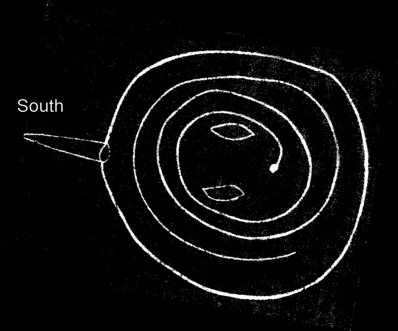 Figure 1-16. Red Giant Moves from East to South©Shannon Dorey |
During this process the stalk, which was also compared to an umbilical cord, moved from the east to the south, which would have looked like Figure 1-16. In another description the Dogon said, "The bursting of the Po Pilu and the whirling of the spiral in the other direction made the covering pivot." This caused the calabash stalk that was in the east to move to the south and the things emerged moving through the slightly dilated neck of the handle or stalk.Griaule and Dieterlen. p. 423 Since the pregnant sun was symbolized by a red calabash, during this part of the myth, a round red calabash was put into the sanctuary. The Dogon said that the circle around the calabash represented everything that was taken up in the spiral and that the "calabash prefigured the matrix where the world was formed."Griaule and Dieterlen. p. 420 It is because of these associations that the symbol prefigured the sowing celebration bulu.
According to the Dogon, everything spun in the opposite direction and then burst freeing everything inside it. This unwinding made a loud sound, which was associated with seven vibrations.Griaule and Dieterlen. p. 423 I believe that this "unwinding" is describing a supernova explosion. "A supernova is a rare astronomical event that occurs during the last stellar evolutionary stages of a massive star's life, whose dramatic violent and catastrophic destruction is marked by one final titanic explosion…. the expanding shock waves from supernova explosions can trigger the formation of new stars."https://en.wikipedia.org/wiki/Supernova
In another description, the Dogon said, "the things will come out of the Po Pilu like a child comes out of the mother's womb when it is born. The red giant Po Pilu was considered the source of all things.Griaule and Dieterlen. p. 420 Because the red giant Female Po Pilu exploded as a supernova, it would have been a large red supergiant star.
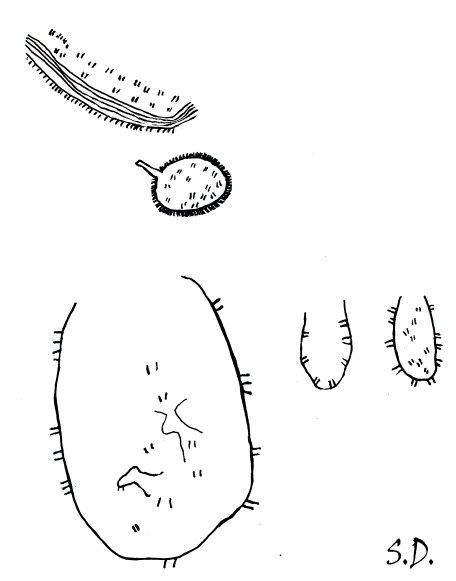 Figure 1-17. Red Giant at La Pileta©Shannon Dorey |
According to Gimbutas, the connection between the hedgehog and the uterus in the symbolism of regeneration probably went back to the upper Paleolithic.Gimbutas. p. 258 Figure 1-17 shows designs made on cave walls of uteri, or hedgehogs at La Pileta near Gibraltar, Spain and dated to 10,000 BCE.Gimbutas. p. 256 The uterus on the top of Figure 1-17 with the protrusion, likely represents the nozzle or "umbilical cord" of the red giant where the gas and dust were expelled. The streams at the top may suggest the matter being ejected by the red giant.
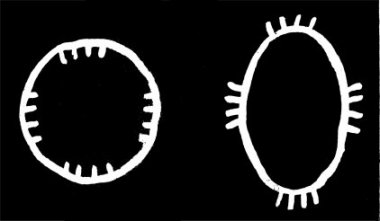 Figure 1-18. Red Giant Emme ya with Po toloFrom Figure 180 A.: Po tolo B Emme ya tolo Griaule and Dieterlen p. 507 |
Compare the other cave drawings in Figure 1-17 with Figure 1-18, which is a Dogon drawing of the red giant Emme ya on the right and the compact star Po tolo on the left.Griaule and Dieterlen. p. 507 Po tolo was associated with the regeneration and emasculation of the Male Po Pilu, which will be referred to in Chapter 2. The drawing on the left in Figure 1-18, which shows the star with the lines inside, is depicting the compact star Po tolo, probably as a white dwarf star before it exploded as a Type Ia supernova. The image on the right is a drawing of the red giant Emme ya with the lines outside indicating that it is expelling its gas and dust on to the compact star Po tolo, which causes it to explode. According to the Dogon, Po tolo exploded when the Eight Nummo Ancestors returned to Earth from the Pleiades, which happened billions of years after the Female Po Pilu exploded. The exploded compact star Po tolo was visible in the sky for 240 years before it disappeared completely.Griaule and Dieterlen. p. 507 These exterior lines were also shown on Dogon drawings of the red giant star the Female Po Pilu when it was excreting its gas and dust just before it exploded.Griaule and Dieterlen. p. 438-440 I believe that these uteri depicted on the cave wall at La Pileta are suggesting the same thing, since the lines appear inside in one uterus drawing and outside on the other. The image of a cow appears inside the large uterus depicted on the cave wall in Figure 1-17. As I referred to earlier, the cow is a sun symbol representing the divine feminine and in this instance is inside a pregnant sun. I believe this symbolizes the same thing as Figure 1-4 that shows our Sun (Lébé) inside the red giant star the Nummo Titiyayne (the Mistress of Speech).
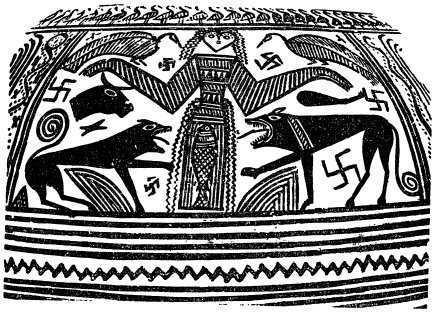 Figure 1-19. Boeotian Egg Shaped Amphora |
Gimbutas pointed out that throughout prehistory the fish was identified with the Goddess' uterus. In referring to this, she showed Figure 1-19, a Boeotian egg-shaped amphora dated around 700-675 BCE that depicts the Greek goddess Artemis.Gimbutas, p. 258 This image was referred to in, Day of the Fish because it shows the fish inside the Greek goddess Artemis in the same way that Lébé is shown as a fish inside the Mistress of Speech (Figure 1-4). The hunt was associated with a red giant star expanding into space and Artemis was the goddess of the hunt in Greek mythology just like the Mistress of Speech in the Dogon religion. In this painting, the fish appears in the uterus suggesting pregnancy. The Female Po Pilu formed the Milky Way Galaxy and the small images resembling tetragammadion cross symbols may symbolize the Milky Way Galaxy, which has four arms. The zigzag line on the bottom of Figure 1-19 appears on the outer circle of the Dogon drawing of the signs of the placenta, Figure 1-6. It also appears in other Dogon drawings in association with red giant stars and resembles the outer edge on the photograph of the red giant star R Sculptoris, Figure 1-7.
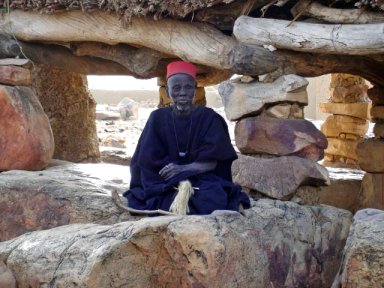 Figure 1-20. Red Hat of the Hogon"Hogon" by Senani P at en.wikipedia. Licensed under CC BY 2.5 via Wikimedia Commons - https://commons.wikimedia.org/wiki/File:Hogon.jpg# /media/File:Hogon.jpg By Senani P at en.wikipedia, CC BY 2.5, resized to half https://commons.wikimedia.org/w/index.php?curid=4098562 |
The importance of the red giants, the Female Po Pilu and Emme ya, were further emphasized in the Dogon religion by the red cap worn by the Dogon spiritual leader, the Hogon, shown in Figure 1-20. The Hogon was the spiritual priest of Lébé, who was symbolized by our Sun. Griaule learned about the importance of the red cap from a man known as Koguem. Ogotemmêli refers to copper in this passage, which was a sun symbol in the Dogon religion.
Another accessory peculiar to the Hogon and indicative of the origin of his power is his red cap. 'The red cap is like a sun on the Hogon's head. No one else may wear a red cap in Sanga.'
Kogeum smiles. 'When I was a rifleman,' he confided to the stranger [Griaule], 'I always took my military cap off when I reached the boundary.' [The cap was red.]
'Another reason,' said Ogotemmêli, 'why the Hogon does not go outside the village is because of the copper.'
When a Hogon dies, a copper ring is put round each of his ankles and arms. …They are made of metal excreted by the Seventh Nummo [Mistress of Speech] after the swallowing. Griaule, Conversations with Ogotemmêli p. 120
These copper rings were identified with a dead sun and may symbolize black holes. The Dogon indicated that there was a black hole or copper ring, which formed at each of the four corners of space, which may have something to do with the four arms of the Milky Way Galaxy. In other diagrams, a ring also appeared in the middle, resembling a symbol that appears on the top of Celtic crosses that I refer to in The Nummo. Dorey, The Nummo p. 89 This symbol was known as the Sign of Fermentation in the Dogon religion and will be referred to in more detail in Chapter 5. Without an understanding of red giant stars, it would have been impossible for me to connect these ancient symbols. It was this knowledge that provided me with the initial piece of this elaborate puzzle, and gave me the starting point I needed to connect these various fragments.
